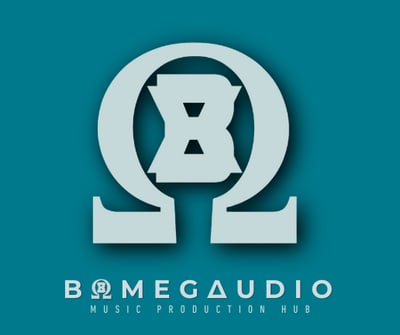10 Studio Essentials for Beginner Music Producers
Everything You Need For A Complete Home Studio Setup
BOMEGACADEMYSTUDIO TECHHARDWARESOFTWARE
2/28/202513 min read


Introduction
Music production is a multifaceted process that involves converting artistic vision into tangible audio. It encompasses various stages, from songwriting and arranging to recording and mixing. For beginner music producers, understanding the essential tools is crucial for embarking on this creative journey. Having the right studio equipment allows aspiring producers to explore their artistic expressions and work with professional-quality audio, regardless of their experience level.
The importance of music production essentials cannot be overstated. These tools not only facilitate the recording process but also provide the necessary framework for creativity. A well-equipped studio can significantly enhance workflow and streamline the production process by offering versatile tools that cater to both recording and editing. This selection of equipment is pivotal for beginners aspiring to develop their skills and produce high-quality music from the outset.
In this guide, we will explore ten essential studio tools that every beginner music producer should consider. Each tool will serve a specific purpose, such as capturing sound, editing tracks, or mixing music. The upcoming sections will detail each item, explaining its function and significance in the overall music production process. From audio interfaces that bridge the analog and digital worlds to digital audio workstations (DAWs) that serve as the command centre for any production, these essentials lay the foundation for successful music creation.
As we delve deeper into each category of equipment, we will highlight how these tools will collectively empower new producers to refine their sound and develop their unique sonic identities. By investing in the right music production essentials, beginners can set themselves up for success and embrace the possibilities of their creative endeavours.
Digital Audio Workstation (DAW)
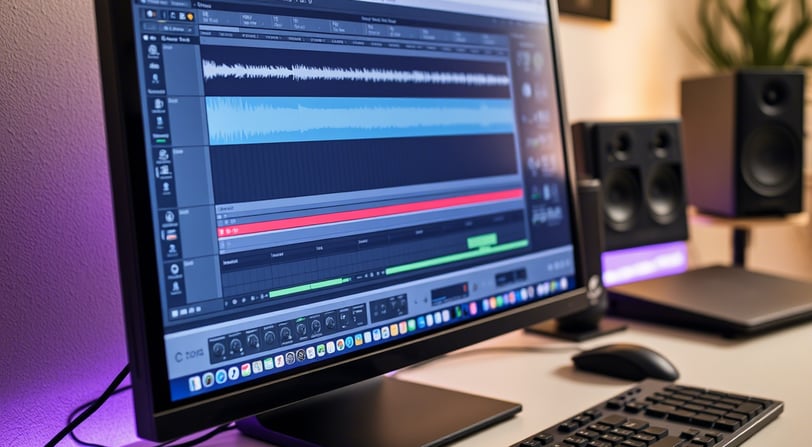

A Digital Audio Workstation (DAW) serves as the central hub for any music production endeavor, acting as the software where recording, editing, and mixing take place. For beginners, selecting an appropriate DAW is crucial, as it can significantly influence the music creation experience. There are several popular DAWs available, each offering distinct features that cater to different preferences and skill levels.
Some of the top DAWs include:
Ableton Live is favoured for its intuitive interface and session view, making it ideal for live performances and electronic music production.
Image Line FL Studio, known for its pattern-based workflow, is particularly user-friendly, which often attracts newer producers.
Avid Pro Tools is revered in professional studios for its robust editing capabilities.
Logic Pro X is a complete suite tailored for Mac users, combining advanced features with a comprehensive library of sounds.
When choosing a DAW, beginners should consider factors such as budget, platform compatibility, and specific features tailored to their music style. Additionally, it's essential to ensure that the chosen DAW integrates seamlessly with other studio equipment, such as audio interfaces, MIDI controllers, and virtual instruments. This integration will streamline the workflow and enhance creative possibilities. Many DAWs come with built-in tutorials, which are particularly beneficial for newcomers who wish to learn the software effectively.
Ultimately, the right DAW will not only facilitate music production but also serve as a foundation for artistic expression. By investing time in exploring different options, beginners can find the DAW that best fits their needs, empowering them to embark on their musical journey with confidence.
MIDI Controller
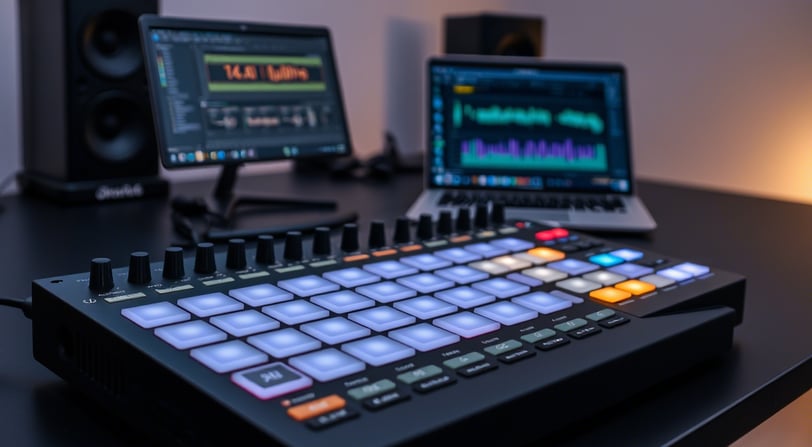

A MIDI controller is an essential tool for music producers, especially those who are just starting out. It acts as a bridge between the software and hardware used in music production, allowing users to create and manipulate sounds more intuitively. Essentially, a MIDI controller transmits musical performance data via the MIDI protocol, which can then be interpreted by a digital audio workstation (DAW) or other software. This capability enables producers to play virtual instruments, control effects, and automate various parameters in their music projects.
The basic functions of a MIDI controller include playing notes on a keyboard, programming rhythms, and controlling software instruments through knobs, faders, and pads. Keyboards typically come with velocity-sensitive keys, which means that they respond to the speed with which a note is played, providing a nuanced playing experience. Some MIDI controllers also include additional features such as a built-in sequencer, which allows producers to record and playback musical ideas with ease.
For beginner music producers, selecting the right MIDI controller can significantly enhance workflow and creativity. It is advisable to choose a controller that balances functionality with usability. Popular options for beginners include the Akai MPK Mini, which is compact yet feature-rich, providing both pads and a mini keyboard that allows for expressive play. The Novation Launchkey Mini is another excellent choice, offering seamless integration with major DAWs and a responsive design that encourages experimentation. Lastly, the Arturia MiniLab 3 provides high-quality keys and ample controls, helping new producers develop their skills without overwhelming them with complexity. Overall, investing in a MIDI controller can markedly improve the production process and aid in the development of one's musical style.
Studio Headphones

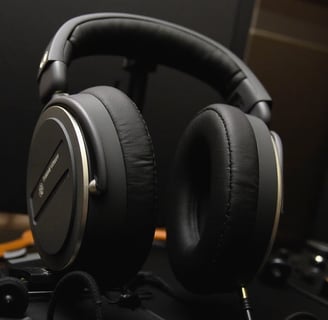
For beginner music producers, selecting high-quality studio headphones is one of the most crucial decisions in setting up a studio environment. The role of these headphones in mixing and monitoring cannot be overstated. Unlike standard consumer headphones, studio headphones are designed to provide a flat frequency response, which enables producers to make more accurate decisions regarding sound. A true representation of audio ensures that the final mix translates well across various playback systems.
There are two primary types of studio headphones: open-back and closed-back. Open-back headphones are designed to create a natural and wide soundstage, making them suitable for critical listening in quiet environments. However, they do not provide isolation from external noise, which can be a disadvantage in a bustling studio atmosphere. On the other hand, closed-back headphones are engineered to offer better isolation from ambient sounds, making them ideal for tracking vocals or instruments while maintaining focus on the mix.
When selecting studio headphones, it is essential to consider key features such as comfort, frequency response, and build quality. A comfortable fit is paramount, as music production sessions can often be lengthy. Look for headphones with plush ear pads and adjustable headbands to ensure prolonged use without discomfort. Additionally, producers should pay attention to the frequency response range; a standard range would be from 20 Hz to 20 kHz to capture the full spectrum of sound. Last but not least, durable construction can withstand the rigors of frequent use, ensuring longevity.
Investing in quality studio headphones can significantly enhance a beginner's ability to monitor and mix music. By providing a clear and accurate representation of sound, they facilitate better mixing decisions and ultimately contribute to producing high-quality music. As a result, they are essential for any aspiring music producer striving for excellence in their craft.
Audio Interface
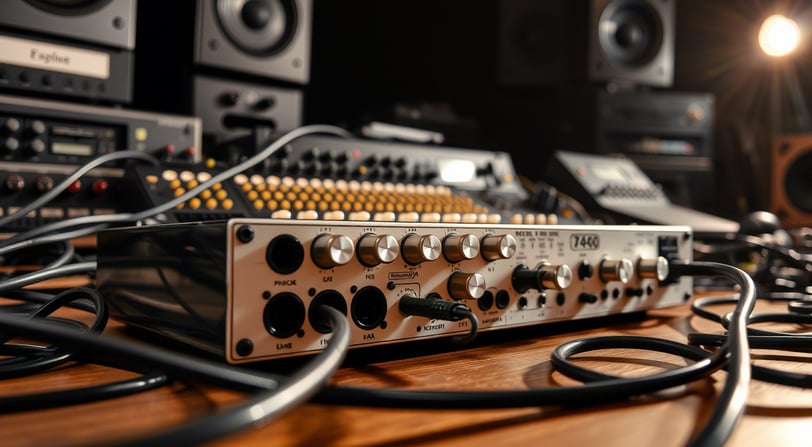

An audio interface plays a pivotal role in the realm of music production, serving as the bridge between musical instruments, microphones, and your Digital Audio Workstation (DAW). It enhances the sound quality of recordings, ensuring that the audio captured is as clear and detailed as possible. This enhancement is crucial, particularly for beginner music producers who may be utilizing less expensive equipment and need that extra support to create a polished sound.
At its core, an audio interface converts analog signals from instruments or microphones into digital audio that your computer can process. This not only facilitates high-resolution audio recording but also allows for the playback of high-definition mixes. Audio interfaces often come equipped with preamps, which amplify the signal from microphones or instruments, so even the most subtle nuances are captured. The selected interface can have a significant impact on your overall production quality, making it an essential component of any home studio setup.
For beginners, several user-friendly audio interfaces are available that offer a solid balance of functionality and affordability. Popular choices include the Focusrite Scarlett 2i2, known for its intuitive design and superior sound quality, and the PreSonus AudioBox USB, which combines simplicity with effective performance. Both of these interfaces provide plug-and-play functionality, making them accessible for those new to music production.
Incorporating an audio interface into your setup can dramatically improve your workflow and the quality of your productions. With its ability to handle multiple input types and high-quality recording capabilities, an audio interface is undoubtedly a studio essential that every beginner music producer should prioritize in their toolkit.
Studio Monitors


Studio monitors are vital tools for music production, serving as the primary source of audio feedback during the mixing and mastering stages. Unlike regular speakers, studio monitors are engineered to provide a flat frequency response. This characteristic ensures that the sound you hear remains true to the original recording, allowing you to make informed decisions when shaping the overall mix. Regular speakers, often designed to enhance certain frequencies for a more enjoyable listening experience, can mislead producers and engineers, resulting in suboptimal mixes that may not translate well across various playback systems.
The significance of a flat frequency response in studio monitors cannot be overstated. A monitor that lacks this feature might colour the sound, exaggerating bass or treble frequencies and creating an imbalanced representation of the audio. This discrepancy can lead to mixing errors, making it challenging to achieve a polished final product. Therefore, when selecting studio monitors, it is crucial to look for models known for their accuracy, as they will provide a reliable reference point when mixing your tracks.
Setting up studio monitors correctly in a home studio environment is also essential for optimal performance. Ideally, they should be positioned at ear level and at least a few feet away from walls to minimize acoustic reflections. A common recommendation is to form an equilateral triangle between the monitors and the listener's position, which helps create a balanced stereo image. Additionally, utilizing monitor isolation pads can further improve sound clarity by reducing vibrations that may affect the audio quality. In summation, the careful selection and proper setup of studio monitors play a critical role in ensuring successful music production, allowing beginner music producers to hone their mixing skills effectively.
Microphone
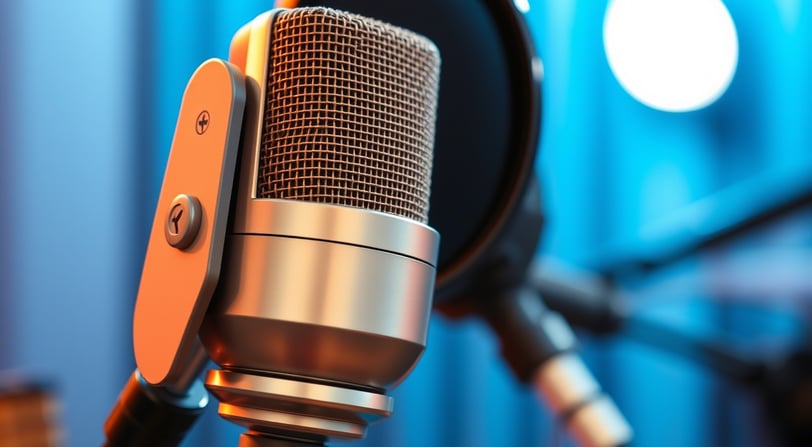

Microphones are fundamental tools in any music production studio, as they are essential for capturing vocals and instruments accurately. For beginner music producers, understanding the different types of microphones and their applications can greatly enhance the quality of recordings. With a variety of options available, selecting the right microphone can be pivotal in achieving the desired sound.
There are primarily three types of microphones that beginners should consider: dynamic, condenser, and ribbon microphones. Dynamic microphones are well-known for their durability and ability to handle high sound pressure levels, making them ideal for live performances and recording loud instruments like drums. Their robustness and relatively low cost make them a popular choice for those just starting in music production.
On the other hand, condenser microphones excel in capturing vocals and acoustic instruments due to their sensitivity to a wider frequency range. They require phantom power to operate, which is often provided by audio interfaces or mixing consoles. This type of microphone is particularly recommended for studio environments where vocals need to be detailed and clear. Pairing a condenser microphone with a pop filter can also minimize plosive sounds, ensuring a cleaner vocal recording.
Ribbon microphones, while generally more expensive and less common among beginners, offer a unique warm sound that can be desirable for certain recording scenarios, particularly for brass and string instruments. When selecting a microphone, consider factors such as the intended use, recording environment, and budget. Additionally, testing different microphones in-store or through personal experience can provide invaluable insights into what works best for your requirements.
In conclusion, investing in the right microphone is a critical step for beginner music producers aiming to elevate their sound. Understanding the characteristics of each type will lead to informed decisions and improved recording quality, ultimately enhancing the production experience.
Virtual Instruments and Plugins (VSTs)
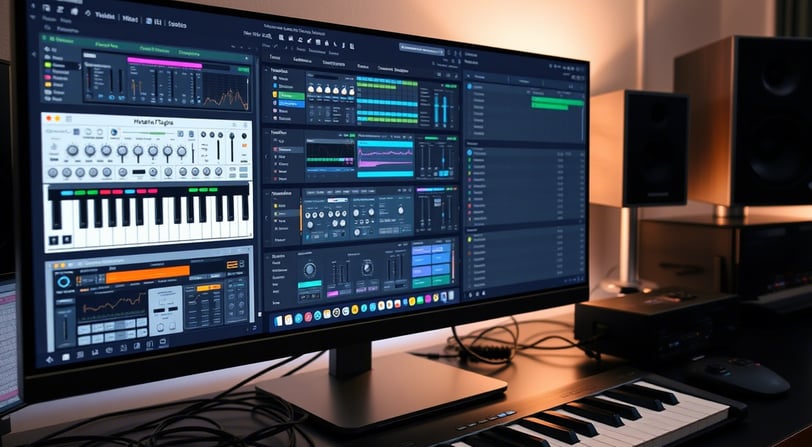

In the realm of music production, virtual instruments and plugins, commonly known as VSTs (Virtual Studio Technology), play a crucial role in expanding a producer's sound palette. These software tools mimic the sounds of traditional instruments and can generate new, unique sounds that contribute to the overall sonic texture of a track. VSTs are typically used within a Digital Audio Workstation (DAW), allowing producers to layer, manipulate, and organize sounds efficiently during the creative process.
Using VSTs within a DAW is a straightforward task. After installing the desired plugins, they can be loaded into the DAW's VST folder. Most DAWs will automatically recognize the installed VSTs, enabling easy access from within the application. Once loaded, VSTs can be played using a MIDI keyboard or programmed directly into the software. This flexibility allows for a wide range of sounds to be integrated into music production, enhancing creativity and experimentation.
For beginners, it is essential to start with user-friendly virtual instruments and VSTs that offer high-quality sounds without overwhelming complexity. Some recommended plugins include Serum for wavetable synthesis, which offers a variety of presets and is highly regarded for its intuitive interface. Additionally, Native Instruments Komplete Start provides a collection of free instruments and effects that can serve as a solid foundation for any aspiring producer. Another essential plugin is Spitfire Audio LABS, offering an extensive library of free orchestral sounds that can add depth and richness to compositions.
Incorporating virtual instruments and plugins into your production workflow can significantly elevate the quality of your music. As you explore the world of VSTs, remember to choose those that resonate with your musical style and inspire your creative process. This exploration is part of the journey in becoming a skilled and versatile music producer.
Sample Packs & Loops


Sample packs and loops are essential tools for beginner music producers, serving as the building blocks for their compositions. A sample pack typically contains a curated collection of audio files, including various instruments, vocal snippets, and electronic sounds that can be easily integrated into music projects. Loops, on the other hand, are short sections of audio that can be repeated in a track, allowing producers to create rhythmic and melodic foundations with minimal effort. By utilizing these resources, beginners can enhance their creativity and streamline their workflow.
Quality samples are crucial for achieving a polished sound. Numerous online platforms offer a wide array of sample packs, covering genres ranging from hip-hop to electronic dance music. Some notable websites where producers can find high-quality samples include Splice, Loopmasters, and Sounds.com. Many of these platforms provide both free and paid options, catering to various budgets. Resources such as these not only offer diverse sound palettes but also often include royalty-free samples, enabling producers to use them without legal concerns.
Incorporating sample packs and loops into a music project can be highly effective for beginners. Producers should start by experimenting with different samples to find sounds that resonate with their artistic vision. They can drag and drop samples into their Digital Audio Workstation (DAW) and layer them with their recordings. This approach allows for the creation of intricate soundscapes without needing extensive musical training right away. Additionally, adjusting tempo and pitch or processing samples with effects can further personalize the sound, leading to unique compositions.
Lastly, it’s essential to remember that while sample packs and loops are advantageous, originality in music production remains paramount. Strive to combine samples creatively and infuse personal elements to develop a distinct musical style. This balance of using samples and personal expression is crucial for evolving as a music producer and achieving a captivating sound.
Acoustic Treatment
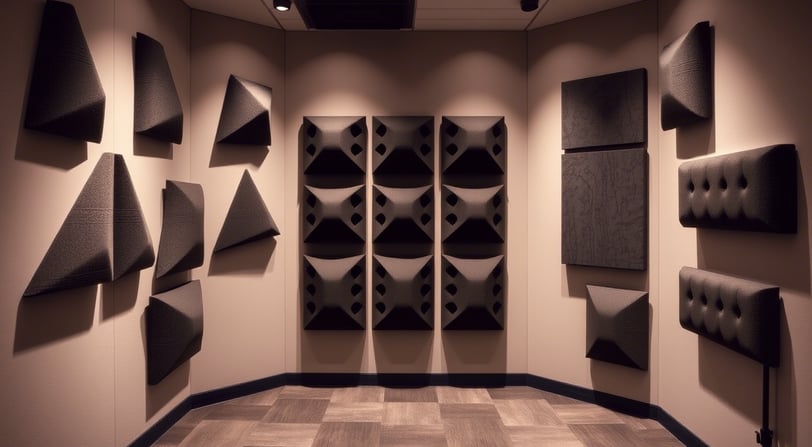

Acoustic treatment is a crucial aspect of setting up a home studio that every beginner music producer should consider. Proper acoustic treatment can greatly enhance the sound quality of recordings and mixes, providing a more accurate representation of the audio being produced. This is particularly important in a home environment where natural acoustics can often lead to unwanted sound reflections and reverb. By addressing these issues, producers can achieve more professional-sounding results.
One of the primary benefits of acoustic treatment is soundproofing, which helps to reduce noise interference from outside the studio. This can be achieved through the installation of soundproofing materials such as acoustic panels, bass traps, and diffusers. Acoustic panels are designed to absorb sound and minimize echo, while bass traps can effectively manage low-frequency sound waves. Diffusers scatter sound waves to create a more balanced listening environment. Investing in these treatments is vital for beginners, as they can drastically elevate the sound quality of recordings.
For beginners on a budget, there are numerous affordable options for improving acoustic treatment. DIY projects, like creating your panels with insulation material and fabric coverings, can effectively absorb sound without costly investments. Placing rugs and heavy curtains can also help reduce sound reflection, serving as an economical way to enhance acoustics. Additionally, strategically positioning furniture can significantly impact sound distribution in the studio space.
It is essential for music producers to recognize that the acoustics of their environment will directly influence the quality of their work. By implementing acoustic treatment, even novice producers can achieve admirable results, paving the way for future advancements in their music production journey. In conclusion, beginning the journey with proper acoustic treatments can set up any producer for long-term success, optimizing both their studio experience and audio output.
Online Learning Resources
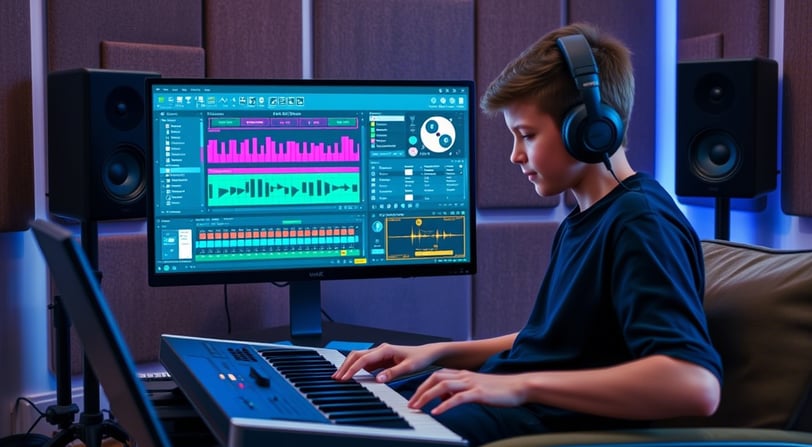

In the rapidly evolving landscape of music production, beginner music producers can greatly benefit from a plethora of online learning resources available today. These resources offer comprehensive courses, tutorials, and community support, making it easier for novices to navigate the complexities of music production. Platforms like YouTube have emerged as significant educational hubs, where a multitude of content creators share in-depth tutorials ranging from basic concepts to advanced production techniques. Whether it is learning how to mix audio or understanding music theory, YouTube caters to every aspect of music production.
Additionally, online universities provide structured learning paths for those looking to gain a formal education in music production. Institutions like Berklee Online and Coursera offer accredited courses led by industry professionals. These courses enable beginners to delve deeper into music production while providing them with the essential skills and knowledge necessary to succeed in the field. The flexibility of online learning allows students to progress at their own pace, accommodating varying schedules and learning styles.
Forums and online communities also play a crucial role in supporting beginner music producers. Websites like Gearslutz and Reddit’s r/WeAreTheMusicMakers provide platforms for users to engage with fellow producers, share tips, ask questions, and seek constructive feedback. These communities can be invaluable for networking and finding inspiration, as sharing personal experiences often helps demystify the challenges of music production.
Overall, the accessibility and diversity of online learning resources equip beginner music producers with the tools and knowledge they need to cultivate their craft effectively. As technology advances and new resources emerge, taking advantage of these platforms is essential for anyone aiming to thrive in the competitive world of music production.
Follow us on Social Media
Follow Bomegaudio on your preferred social media platform for more music production insights, expert tips, gear reviews, private feedback and exclusive content tailored for producers like you.
Contact us
E-mail us directly on
© Bomegaudio 2025. All Rights Reserved.
Or use this form
Opening hours
[GMT+2 / CET]
Mondays :: Closed
Tue - Thu :: 05:00 - 20:00
Fri - Sat :: 05:00 - 22:00
Sundays :: Closed
420 Bomeg Avenue
Dank Francisco, BO

